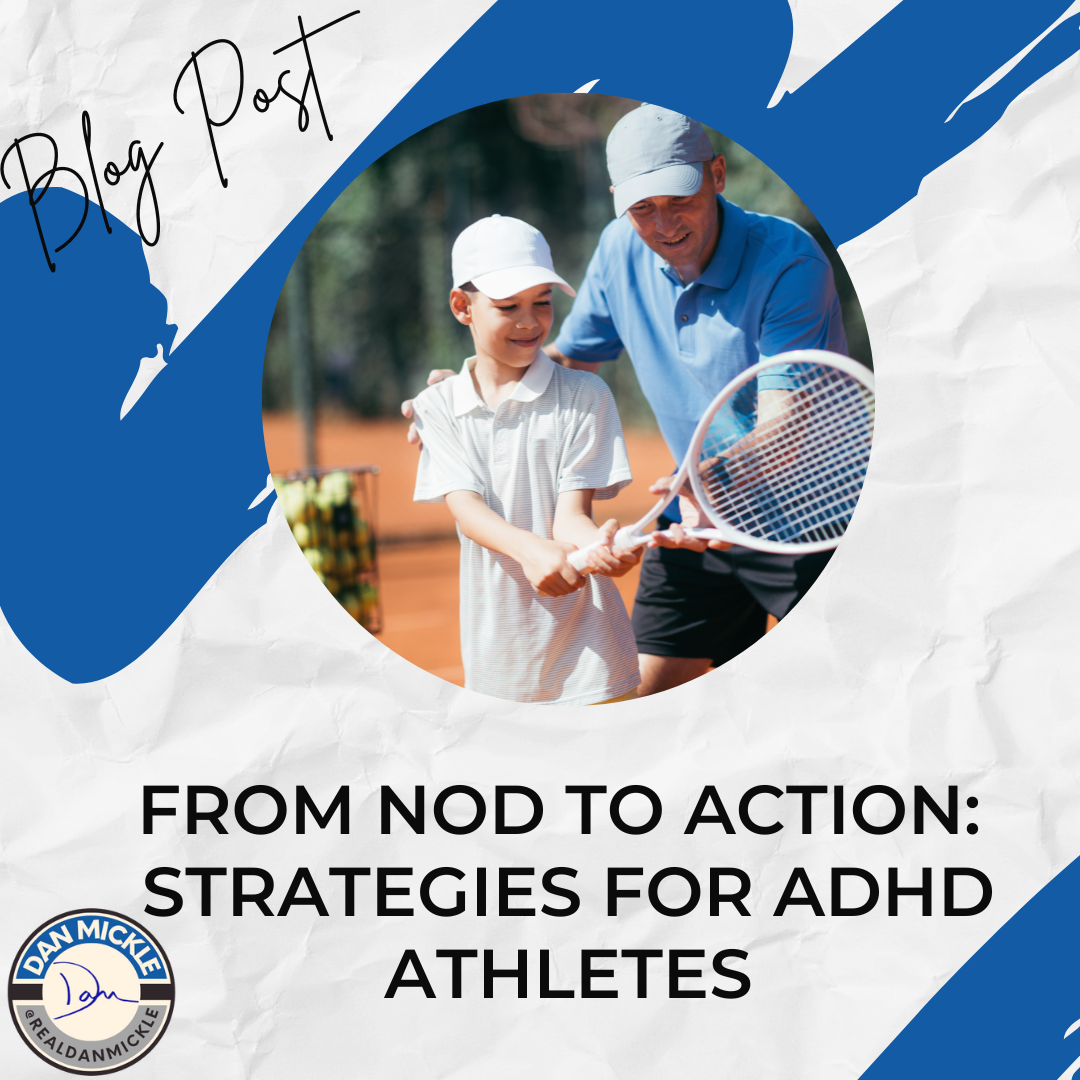If you have a daughter who loves volleyball but struggles to follow instructions, you’re not alone. Many parents of ADHD athletes understand this challenge. Your child may look at you with wide eyes and nod, but when it’s game time, the instructions vanish. How do we close that gap between hearing and doing in sports?
We know our kids love their sport. Volleyball is their passion, after all. It’s not that they aren’t interested. ADHD affects their ability to absorb and apply instructions in real-time. While this isn’t an easy fix, effective strategies for ADHD athletes can make a world of difference.
Breaking It Down: The Power of Chunking Information
One of the best strategies for ADHD athletes is breaking instructions down into bite-sized pieces. It’s easy to give a broad, sweeping instruction like, “Work on your serve and stay focused on your positioning.” But for an ADHD brain, that’s a lot to process at once. Instead, try breaking it into smaller, clearer steps: “First, focus on your toss. Then, pay attention to your arm swing. Finally, keep your feet planted.” When things are chunked down, the athlete can focus on one thing at a time, reducing overwhelm and increasing follow-through.
Tip: If the coach doesn’t break instructions down this way, you can help by doing it yourself at home. Repetition of simple, clear steps can go a long way.
Visual and Physical Cues: Giving ADHD Athletes a Clear Roadmap
Another great strategy for ADHD athletes is the use of visual and physical cues. Sometimes, words just don’t register, especially when there’s a lot of action happening around them. So, incorporating visual or physical signals can help ground the athlete and keep them on track.
For instance, you can create a “mental checklist” for your child that they can reference during practices and games. This could include simple visuals, like a chart with pictures of the steps involved in their key skills (e.g., serving, receiving, or setting). Another method might involve hand signals or a tap on the shoulder as a physical reminder for specific actions (like keeping the arms straight during a pass).
Tip: Pair these cues with positive reinforcement. The more they see these visual cues linked with success, the more likely they are to internalize them over time.
Consistency Is Key: Make It Part of the Routine
For ADHD athletes, consistency in both practice and instruction is vital. ADHD brains thrive in structured environments, so helping your athlete know what to expect at every practice and game can help set them up for success.
If you’ve read my previous blog Coaching Players with ADHD, you know how important it is to have routines that players can count on. Whether it’s always running the same warm-up drills before each practice or using the same cue words during coaching sessions, sticking to a consistent routine helps your athlete’s brain stay organized and focused. It’s like putting together a puzzle – each piece fits, and over time, the full picture starts to come together.
Tip: Keep routines clear, simple, and predictable. When things are consistent, your athlete will have fewer distractions and will be better able to execute what they’ve learned.
Get Them Involved in Their Own Success: Empowerment Through Choice
A crucial part of any ADHD management plan involves helping your athlete take ownership of their development. Instead of simply telling them what to do, ask them what strategies they think will work for them. For example, ask, “What part of the game do you find hardest to remember?” or “What could help you stay focused during practice?” Involving them in finding their own solutions fosters a sense of control, which is key to helping them take ownership of their learning process.
If you’re looking for more hands-on strategies to help your ADHD athlete build mental performance skills, check out my upcoming Mental Performance Bootcamp. It’s designed specifically for athletes aged 12-18, and it’s a fantastic opportunity to equip your child with the tools they need to thrive both on and off the court.
Tip: Keep them in the loop. Allowing your athlete to take ownership of their mental performance can make a huge difference in how they approach the game.
Moving Forward: Consistent Support and Practice
At the end of the day, strategies for ADHD athletes are all about consistency, clarity, and patience. While it may take a bit more time for your daughter to internalize and act on coach’s instructions, with the right strategies, she can thrive. Breaking down instructions, using visual cues, sticking to routines, and empowering her to take ownership are all ways you can help her succeed.
With the right support, your daughter can go from simply nodding along to taking action on the court, and beyond.


